OUTDOOR DECOR
Growing up in Manhattan, I began life with an odd relationship to the “outside”…. I remember Fran Lebowitz, the ultimate New Yorker, commenting that “Nature is by and large to be found out of doors, a location where there are never enough comfortable chairs.” I thought this was hysterical as it perfectly summed up a typical New Yorker’s perception of ‘outside’…as if it were somehow too much work to be there. This may be where I started, but like many of you, I’ve come a long way and so, thankfully, has the outdoor furnishings business.

Imagining your garden today you may think in terms of beautiful plantings that enhance curb appeal and create lovely seasonal vistas from the windows. The main goal in a good landscape, however, is to create inviting spaces that extend living from indoors to outdoors. And once you have created those outdoor spaces, they need to be furnished in order to be fully used and enjoyed. Plantings are part of the décor but in order to fully admire and enjoy those plantings, it’s important to have a place to lounge, dine, sun bathe, cook or whatever!

Outdoor decor has exploded in recent years bringing all the comforts of indoor rooms to the exterior: from comfy pillows, to sheer draperies, rugs and light fixtures. The simpler wood and aluminum options of the past have opened up to a wide array of new materials including resin wickers, lightweight tubular aluminum and stainless steel. The array of choices is as exciting and wonderful as it is confusing. A few guidelines can be helpful, so to that end, I created a list of ‘tips’ for upgrading outdoor spaces that was recently published by Princeton Magazine and Urban Agenda, two on-line publications.
Understand your space and style

Is the purpose of your outdoor room dining, cooking, entertaining or all the above? Putting it in ‘interior’ terms is the space a dining room, kitchen, living room or a combination of all? Is your style traditional, modern or somewhere in between? Once you have answered these key questions you can more easily identify what pieces you’ll need and what look you’re going for.
Plan out the space

Be realistic about costs.
Outdoor furnishings are in investment, and like anything else, you get what you pay for. There are many great options, but generally the more quality you invest in the more likely that these furnishings will withstand the elements and give you many good years of use and performance.
Play with color, fabrics and accessories
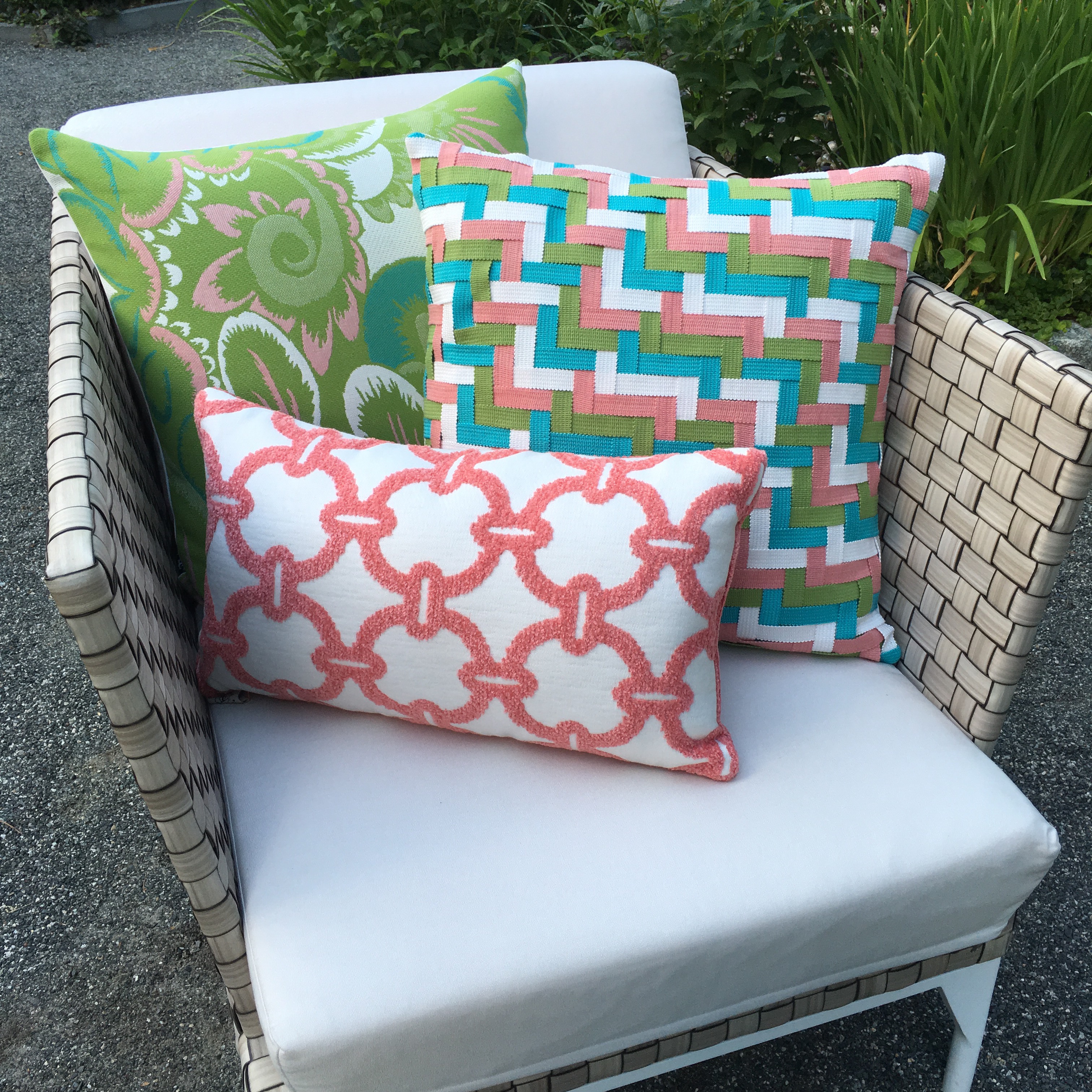
The outdoor fabric market is full of fade, rain and weather resistant introductions for many uses: cushion covers, colorful rugs, fantastic pillows and drapery accents in delicate sheers. Neutrals for cushions are the easiest choice especially where children and pets may be sharing the space. I recommend going neutral for the main fabric choice and then playing with color accents in pillows, rugs and accessories. This way you can change things up easily and often!
Lighting

Lighting is often overlooked out of doors, but as dusk turns into night time relaxing and entertaining, don’t forget to add the ambiance and practicality that light brings. There are many options: candles and lanterns are classic, fire tables and fire pits create a great reason to gather well into the fall months, torcheres add an exotic island touch, while fanciful string lights can create a charming party atmosphere or dining elegance when carefully interlaced on tree branches. There are even table lamps with exterior specified wiring and an enclosed bulb housing to give real ‘indoor’ lighting ambiance to your patio side tables and consoles.
See the full article here:
Mierop Design owns and operates Pavillion Outdoor Furnishings and is dedicated to guiding clients through the array of choices available in outdoor furnishings. Please feel free to contact us for customized outdoor furnishing layouts, as well as services to specify and handle all aspects of ordering, delivery and white glove set up.
The Suburban Lot is a monthly blog that highlights topics and issues unique to the suburban landscape. For assistance with any of the above information, please contact Mierop Design, a complete resource for landscape design, installation and property maintenance services.



 One of the most classic combinations is roses and catmint (nepeta varieties). Rose flowers are exquisite, but the plant form itself can often be leggy and unattractive. Some of the newer varieties have fuller shrub forms which work well alone, however it’s often the case that the stick-like legs of the rose are best disguised by a fluffy partner. Catmint fits the bill perfectly. Full, airy, soft and profusely generous in flower production, catmint varieties are perfect for roses, hiding their bare legs and offering a contrasting color and flower form. One of my favorite combinations is the yellow rose ‘Julia Child’ along with nepeta ‘Walker’s Low’. But don’t stop there. The blues of catmint combine well with peach, pink, red and even white roses. You really can’t go wrong. Both plants like well-drained soil and full sun. Roses need more fertilization than the catmint, but as roses often are fed separately I have never found this to be a problem.
One of the most classic combinations is roses and catmint (nepeta varieties). Rose flowers are exquisite, but the plant form itself can often be leggy and unattractive. Some of the newer varieties have fuller shrub forms which work well alone, however it’s often the case that the stick-like legs of the rose are best disguised by a fluffy partner. Catmint fits the bill perfectly. Full, airy, soft and profusely generous in flower production, catmint varieties are perfect for roses, hiding their bare legs and offering a contrasting color and flower form. One of my favorite combinations is the yellow rose ‘Julia Child’ along with nepeta ‘Walker’s Low’. But don’t stop there. The blues of catmint combine well with peach, pink, red and even white roses. You really can’t go wrong. Both plants like well-drained soil and full sun. Roses need more fertilization than the catmint, but as roses often are fed separately I have never found this to be a problem.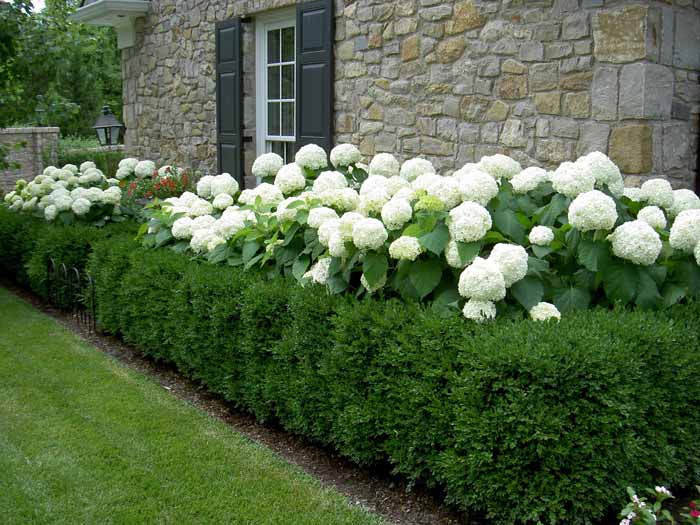 For sun, part sun and part shade areas, nothing is more classic and elegant than boxwood and hydrangea. The translation for certain boxwoods names (i.e., buxus microphylla) means ‘little leaf’. The translation for hydrangea macrophylla (the mophead types) is ‘big leaf’. The little evergreen leaves of boxwood provide a perfect foil for big hydrangea leaves, plus their forms nicely contrast stricter formal boxwood shapes with blousy and informal hydrangeas. As an evergreen, boxwood also pairs with hydrangea much the same as catmint/rose combinations – by hiding the legginess of the bare stalks in winter when the boxwood fronts the hydrangea. I also like mixing larger boxwoods in the background with smaller hydrangeas: tall American boxwoods marry nicely with some of the smaller dwarf hydrangeas, while shorter Koreans and English boxwood hedges contrast well with taller mop heads, panicles and oak leaf varieties.
For sun, part sun and part shade areas, nothing is more classic and elegant than boxwood and hydrangea. The translation for certain boxwoods names (i.e., buxus microphylla) means ‘little leaf’. The translation for hydrangea macrophylla (the mophead types) is ‘big leaf’. The little evergreen leaves of boxwood provide a perfect foil for big hydrangea leaves, plus their forms nicely contrast stricter formal boxwood shapes with blousy and informal hydrangeas. As an evergreen, boxwood also pairs with hydrangea much the same as catmint/rose combinations – by hiding the legginess of the bare stalks in winter when the boxwood fronts the hydrangea. I also like mixing larger boxwoods in the background with smaller hydrangeas: tall American boxwoods marry nicely with some of the smaller dwarf hydrangeas, while shorter Koreans and English boxwood hedges contrast well with taller mop heads, panicles and oak leaf varieties. For perennial combinations and late summer color in full on sun, one of my favorites mixes is the wispy, see-through quality of Russian sage against the study color blocks of leucanthemum (daisy), rudbeckia (black eyed-susan) or echinaceas (cone flower)……all ‘daisy’ type flowers. These late season partners pack a lot of drama in color and textural contrasts. Preferring full hot sun, little fertilization and great drainage, these are unfussy couples that put on a long show. The delicate pastel lavender of the Russian sage also plays beautifully off all the saturated daisy colors : orange, peach, red and white.
For perennial combinations and late summer color in full on sun, one of my favorites mixes is the wispy, see-through quality of Russian sage against the study color blocks of leucanthemum (daisy), rudbeckia (black eyed-susan) or echinaceas (cone flower)……all ‘daisy’ type flowers. These late season partners pack a lot of drama in color and textural contrasts. Preferring full hot sun, little fertilization and great drainage, these are unfussy couples that put on a long show. The delicate pastel lavender of the Russian sage also plays beautifully off all the saturated daisy colors : orange, peach, red and white.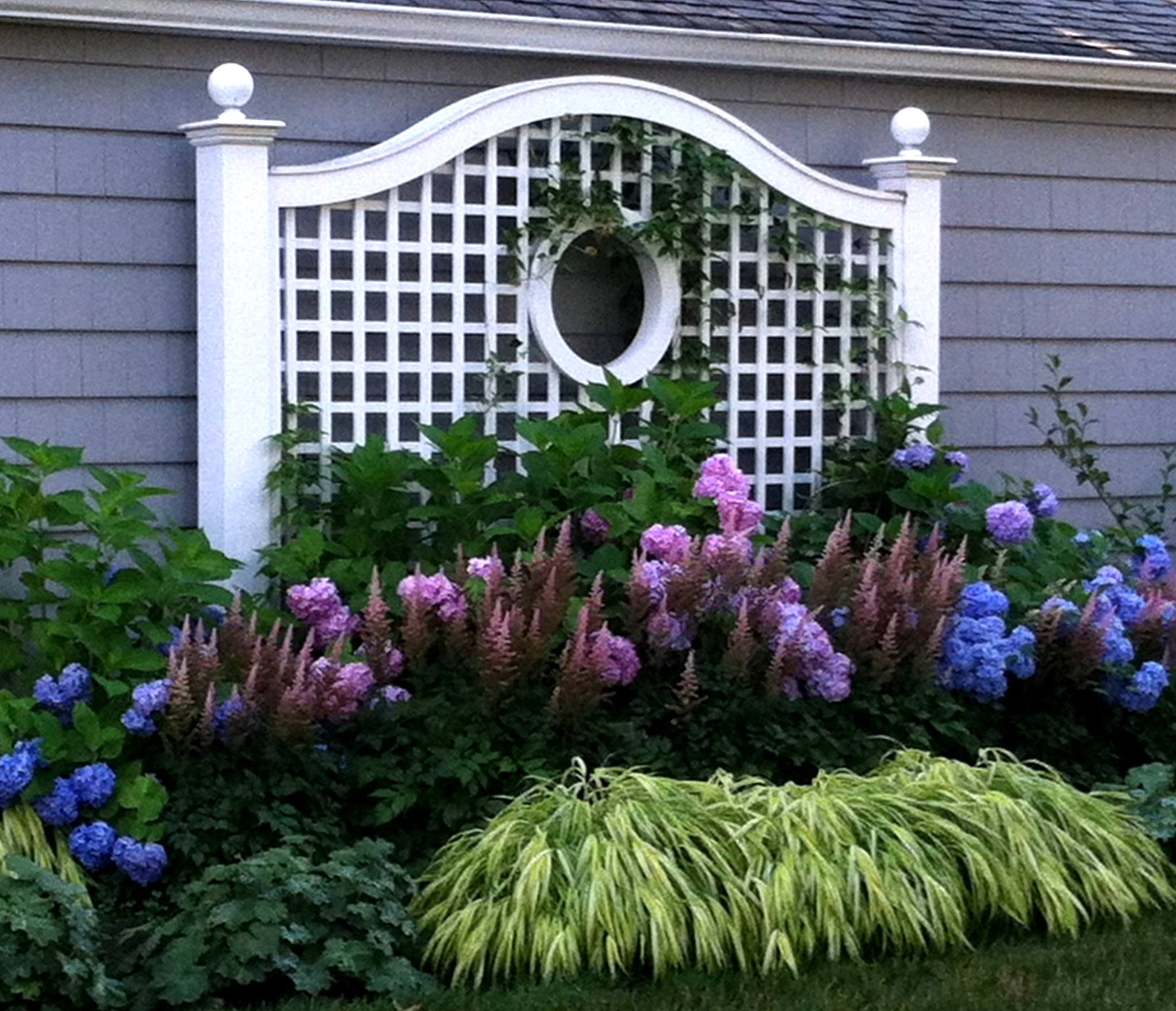 Shady areas always bring more challenges as there are fewer plants to choose from. Yellow hakone grass (hakonechloa macra ‘Aureola’) is one of my preferred selections for its pop of yellow in the shade. It is also one of the few grasses that tolerates shade. Add to its already stellar selling points with a great astilbe and the overall effect gets punched up. Astilbe are available in many heights and colors. I am very fond of astilbe ‘Visions’ for its short and plump purple flower stems. It’s a knockout combination with the yellow hakone grass.
Shady areas always bring more challenges as there are fewer plants to choose from. Yellow hakone grass (hakonechloa macra ‘Aureola’) is one of my preferred selections for its pop of yellow in the shade. It is also one of the few grasses that tolerates shade. Add to its already stellar selling points with a great astilbe and the overall effect gets punched up. Astilbe are available in many heights and colors. I am very fond of astilbe ‘Visions’ for its short and plump purple flower stems. It’s a knockout combination with the yellow hakone grass. For any of these pairings, remember to consider light, soil conditions and moisture needs first, and make sure the plants are in compatible garden areas. Many of my earlier gardening mistakes involved putting plants together that didn’t share the same horticultural needs. Secondly, consider texture – big versus small leaves, or an upright versus a weeping or mounded form draw the eye and make these pairings more interesting. Lastly, consider color using the color wheel. Opposites do attract, so cools like blues and purples are always a sure bet against warm yellows, peaches and oranges. Regarding texture and color, however, as with much written on gardening etiquette, beauty is in the eye of the beholder – so feel free to experiment and break rules when the fancy strikes.
For any of these pairings, remember to consider light, soil conditions and moisture needs first, and make sure the plants are in compatible garden areas. Many of my earlier gardening mistakes involved putting plants together that didn’t share the same horticultural needs. Secondly, consider texture – big versus small leaves, or an upright versus a weeping or mounded form draw the eye and make these pairings more interesting. Lastly, consider color using the color wheel. Opposites do attract, so cools like blues and purples are always a sure bet against warm yellows, peaches and oranges. Regarding texture and color, however, as with much written on gardening etiquette, beauty is in the eye of the beholder – so feel free to experiment and break rules when the fancy strikes.
 The most requested flower in my landscape projects is the hydrangea. Whether it’s the standard blue mop heads, lush oak leafs and upright panicle forms, they are beloved by all for their showy, large and long lasting summer displays.
The most requested flower in my landscape projects is the hydrangea. Whether it’s the standard blue mop heads, lush oak leafs and upright panicle forms, they are beloved by all for their showy, large and long lasting summer displays. many took this quite personally. During my spring walking tours, I was amused by hearing the same quote over and over: “my hydrangeas look terrible” ……as if it were just hydrangeas on their property that were suffering. Many, mistakenly, thought their hydrangeas were dead and needed to be replaced. And after two bad winters and two bad summers of hydrangea performance, many were counting on 2016 as payback time.
many took this quite personally. During my spring walking tours, I was amused by hearing the same quote over and over: “my hydrangeas look terrible” ……as if it were just hydrangeas on their property that were suffering. Many, mistakenly, thought their hydrangeas were dead and needed to be replaced. And after two bad winters and two bad summers of hydrangea performance, many were counting on 2016 as payback time.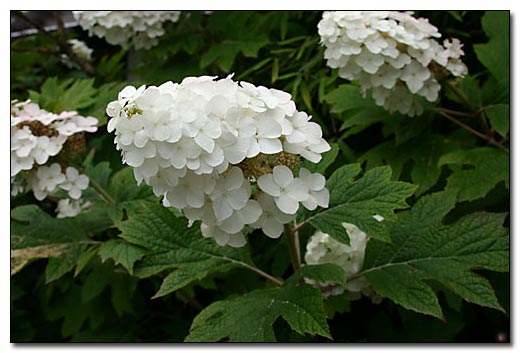 Let’s set the record straight. Hydrangeas are far from dead, in fact, the oak leaf varieties are right now putting on a banner show. They did, however, mostly look dead this spring. Winter as you may recall, was quite mild. On Christmas Day we almost considered eating outside. Plants were fooled by the warm temperatures into producing lush buds all set to leaf out and flower, when they were struck by a hard, late frost. Mop heads bloom on ‘old’ wood (meaning wood that was produced during the previous growing season). So the net effect was that all the tender buds and canes on the plants were lost to the unexpected frost. The plant effectively died down to the ground. The root system, however, was fine which is really what you need to care most about.
Let’s set the record straight. Hydrangeas are far from dead, in fact, the oak leaf varieties are right now putting on a banner show. They did, however, mostly look dead this spring. Winter as you may recall, was quite mild. On Christmas Day we almost considered eating outside. Plants were fooled by the warm temperatures into producing lush buds all set to leaf out and flower, when they were struck by a hard, late frost. Mop heads bloom on ‘old’ wood (meaning wood that was produced during the previous growing season). So the net effect was that all the tender buds and canes on the plants were lost to the unexpected frost. The plant effectively died down to the ground. The root system, however, was fine which is really what you need to care most about.
 So although I don’t predict a banner summer for mop heads or lace caps, the good news is that oak leafs (Snow Queen, Ruby Slippers), smooth hydrangeas (Annabelle and the newer Incrediball) and upright panicle types (Pee Gee, Limelight, Little Lime, Strawberry Vanilla) are doing beautifully and we look forward to enjoying their performances as the summer unfolds.
So although I don’t predict a banner summer for mop heads or lace caps, the good news is that oak leafs (Snow Queen, Ruby Slippers), smooth hydrangeas (Annabelle and the newer Incrediball) and upright panicle types (Pee Gee, Limelight, Little Lime, Strawberry Vanilla) are doing beautifully and we look forward to enjoying their performances as the summer unfolds.
 A typical suburban landscape, though it incorporates elements of nature, is not really natural environment at all. In a self-sustaining ecosystem, like a forest, many different types of plants grow and support one another, creating a cycle of growth and decomposition, which creates nutrient rich, organic soil, also known as “living” soil . When there is just one type of plant (monoculture), as in the case of lawns, that natural cycle doesn’t exist. The soil is often lacking in nutrients, weakening plant health and making it susceptible to diseases, pests and weeds. Applying chemicals further compromises soil health by killing microorganisms, resulting in dead soil with no nutrients.
A typical suburban landscape, though it incorporates elements of nature, is not really natural environment at all. In a self-sustaining ecosystem, like a forest, many different types of plants grow and support one another, creating a cycle of growth and decomposition, which creates nutrient rich, organic soil, also known as “living” soil . When there is just one type of plant (monoculture), as in the case of lawns, that natural cycle doesn’t exist. The soil is often lacking in nutrients, weakening plant health and making it susceptible to diseases, pests and weeds. Applying chemicals further compromises soil health by killing microorganisms, resulting in dead soil with no nutrients. Beyond soil health, anyone with children or pets, as well as anyone concerned about the health of the planet, is looking for alternatives to conventional, chemical based care. However, you may be wondering, “What exactly does organic involve?” and “Does it really work?”
Beyond soil health, anyone with children or pets, as well as anyone concerned about the health of the planet, is looking for alternatives to conventional, chemical based care. However, you may be wondering, “What exactly does organic involve?” and “Does it really work?” phosphates, which run off into waterways, causing problems in aquatic ecosystems. Dial Environmental uses a ‘probiotic’ approach—by focusing on improving the soil through the addition of beneficial microorganisms. These organisms help break down nutrients so the lawn can absorb them more readily, which in turn, improves the quality and health of the grass without the use of chemicals.
phosphates, which run off into waterways, causing problems in aquatic ecosystems. Dial Environmental uses a ‘probiotic’ approach—by focusing on improving the soil through the addition of beneficial microorganisms. These organisms help break down nutrients so the lawn can absorb them more readily, which in turn, improves the quality and health of the grass without the use of chemicals.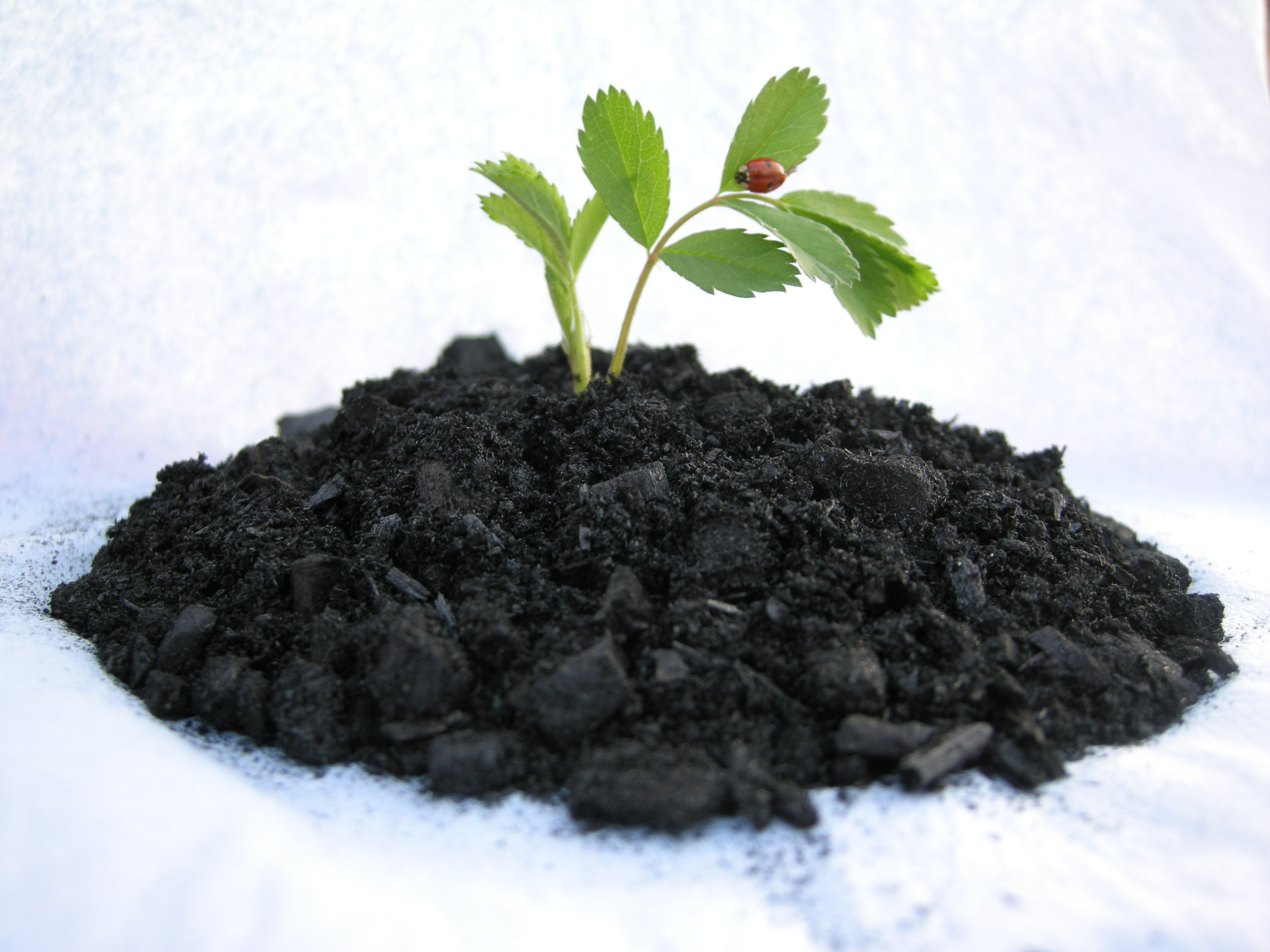 Diseases and pests that target trees, shrubs and other plantings are most often related to poor top soil, too much or not enough watering, or improper use of fertilizers. Care of the soil and proper irrigation are the basis of organic care. Organic fertilizers and soil amendments are excellent ways to improve the soil naturally and make landscape plantings more disease and insect resistant. Biochar, a carbon-enriched charcoal product made from wood, leaves and/or manure, increases microbial activity and improves water retention in soil. In addition, biochar production may remove carbon dioxide from the atmosphere, actually having the potential to positively impact global warming.
Diseases and pests that target trees, shrubs and other plantings are most often related to poor top soil, too much or not enough watering, or improper use of fertilizers. Care of the soil and proper irrigation are the basis of organic care. Organic fertilizers and soil amendments are excellent ways to improve the soil naturally and make landscape plantings more disease and insect resistant. Biochar, a carbon-enriched charcoal product made from wood, leaves and/or manure, increases microbial activity and improves water retention in soil. In addition, biochar production may remove carbon dioxide from the atmosphere, actually having the potential to positively impact global warming.
 As spring rushes in with a burst of fresh colors and textures, I find myself examining plant life again in an up close and personal way. We all know the favorite adage about ‘taking time to smell the roses” however taking time to “see” the flowers is the first step in that process.
As spring rushes in with a burst of fresh colors and textures, I find myself examining plant life again in an up close and personal way. We all know the favorite adage about ‘taking time to smell the roses” however taking time to “see” the flowers is the first step in that process. examine that beauty than through the work of photographer Robert Llewellyn. In an age of high-definition everything, his breathtaking macro-photography reveals the details and intricacies of plant life which our naked eye alone is not capable of seeing. The results are simply spectacular, pushing our ability to “see” into a new dimension.
examine that beauty than through the work of photographer Robert Llewellyn. In an age of high-definition everything, his breathtaking macro-photography reveals the details and intricacies of plant life which our naked eye alone is not capable of seeing. The results are simply spectacular, pushing our ability to “see” into a new dimension.


 Outside water bibs have been closed all winter and it’s time to get them back on. Find your hoses and set them up in accessible locations. Hose carts, bowls and bibs can tidy up hose storage against a house foundation. I personally struggle lugging heavy hosing around the garden and get especially frustrated when it runs over my perennials or snags on a stone edge. I have recently converted to using lightweight expandable hoses. Their inner tubing expands and contracts with water flow and they have truly made watering a lightweight chore I no longer dread. Spend for the most heavy duty model available as less expensive styles have a tendency to break.
Outside water bibs have been closed all winter and it’s time to get them back on. Find your hoses and set them up in accessible locations. Hose carts, bowls and bibs can tidy up hose storage against a house foundation. I personally struggle lugging heavy hosing around the garden and get especially frustrated when it runs over my perennials or snags on a stone edge. I have recently converted to using lightweight expandable hoses. Their inner tubing expands and contracts with water flow and they have truly made watering a lightweight chore I no longer dread. Spend for the most heavy duty model available as less expensive styles have a tendency to break.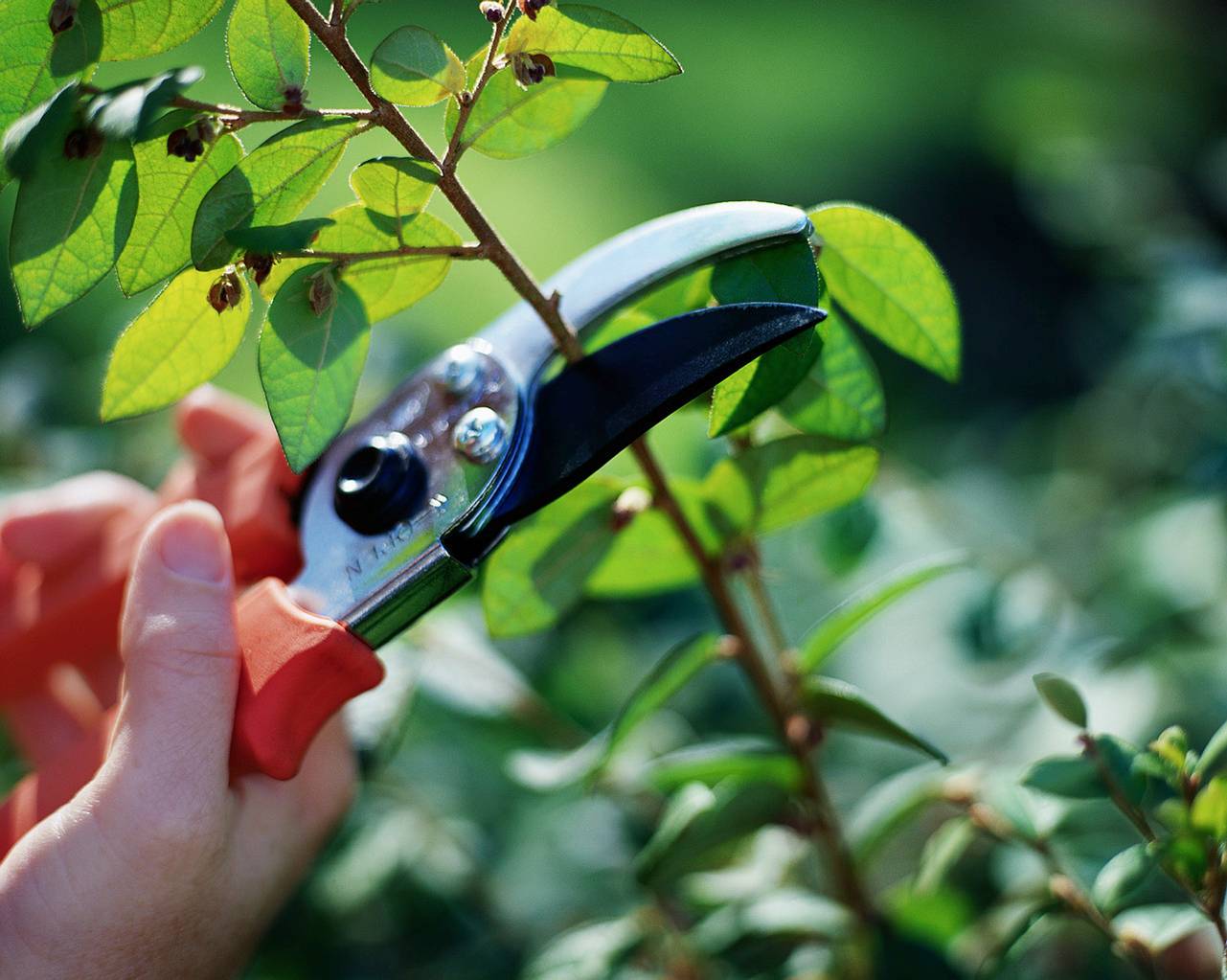 Check trees and shrubs for dead or winter damaged branches and prune as needed. This is also the moment, without leaves blocking your view, to prune out crossing branches or to reshape and re-size shrubs like roses, hydrangea, spirea, caryopteris, twig dogwoods and many other species. Refer to books or on-line guides about proper pruning techniques and timing for specific plants. Generally speaking pruning is the best way to rejuvenate your garden, keeping things in bounds and at peak performance.
Check trees and shrubs for dead or winter damaged branches and prune as needed. This is also the moment, without leaves blocking your view, to prune out crossing branches or to reshape and re-size shrubs like roses, hydrangea, spirea, caryopteris, twig dogwoods and many other species. Refer to books or on-line guides about proper pruning techniques and timing for specific plants. Generally speaking pruning is the best way to rejuvenate your garden, keeping things in bounds and at peak performance.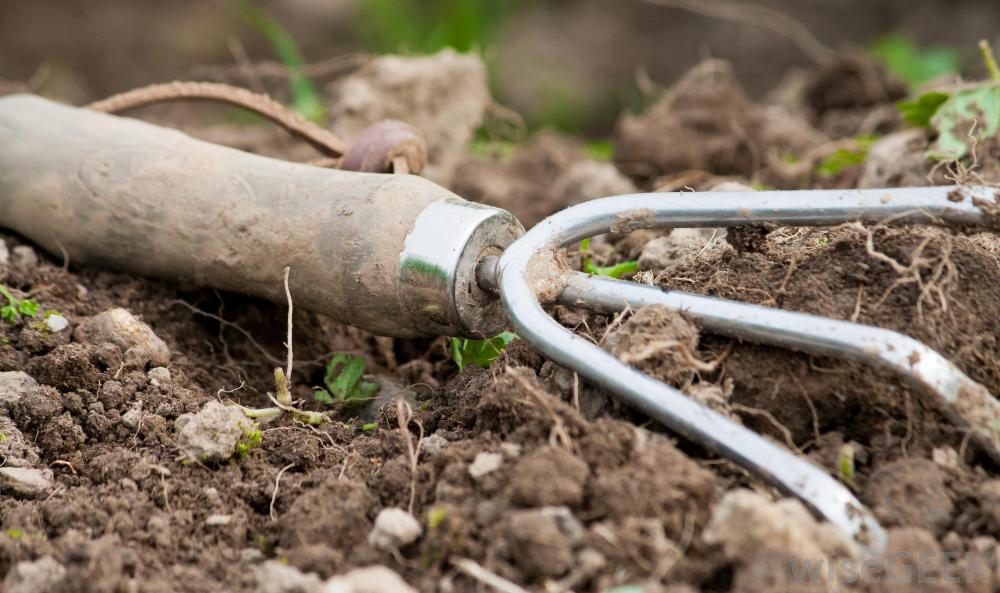 Open up the soil surface in early spring by lightly cultivating around shrubs and perennials. Avoid disturbing roots by remaining outside the drip line of most plantings. An open porous surface allows water and fertilizers to penetrate the soil. This is also a moment, as new foliage starts pushing, to apply fertilizers if needed. I recommend an application of slow release Osmocote for perennial areas and a dry application of Holly-tone or Miracid for ericaceous (acid loving) plants such as rhododendron, azalea, andromeda, mountain laurel and holly – especially if they are planted along house foundations which tend to be home to alkaline soils. Use fertilizer sparingly and always read labels for rates of application.
Open up the soil surface in early spring by lightly cultivating around shrubs and perennials. Avoid disturbing roots by remaining outside the drip line of most plantings. An open porous surface allows water and fertilizers to penetrate the soil. This is also a moment, as new foliage starts pushing, to apply fertilizers if needed. I recommend an application of slow release Osmocote for perennial areas and a dry application of Holly-tone or Miracid for ericaceous (acid loving) plants such as rhododendron, azalea, andromeda, mountain laurel and holly – especially if they are planted along house foundations which tend to be home to alkaline soils. Use fertilizer sparingly and always read labels for rates of application.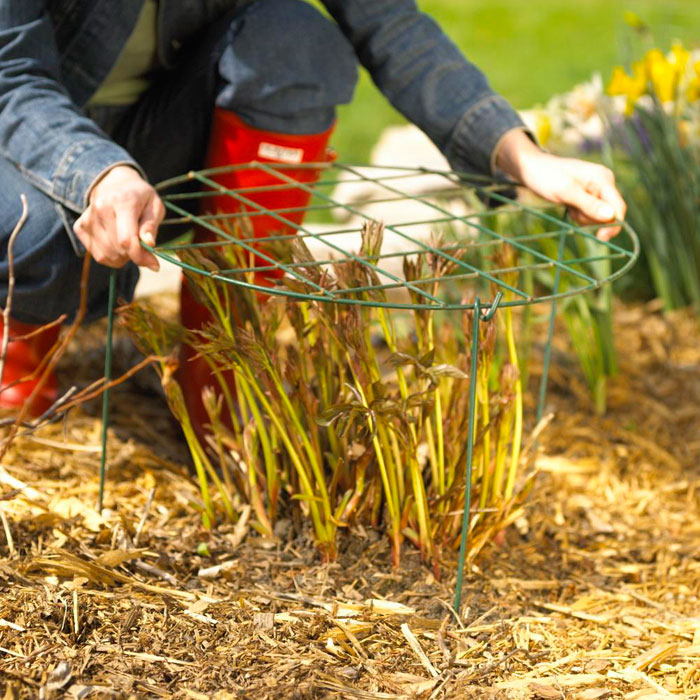 Many perennials need support as they grow and produce flowers. Heavy spring rains are known for trampling flowers – peonies in particular. I recommend setting up stakes and grow-throughs when foliage is up just a few inches. Waiting longer makes staking more difficult and time consuming, and waiting too long makes it impossible or highly unattractive. Try to position stakes in a natural way around and within the growth habit of the plant. Using branches and twigs tucked within a plant is a more time consuming method, but has the advantage of being almost invisible.
Many perennials need support as they grow and produce flowers. Heavy spring rains are known for trampling flowers – peonies in particular. I recommend setting up stakes and grow-throughs when foliage is up just a few inches. Waiting longer makes staking more difficult and time consuming, and waiting too long makes it impossible or highly unattractive. Try to position stakes in a natural way around and within the growth habit of the plant. Using branches and twigs tucked within a plant is a more time consuming method, but has the advantage of being almost invisible.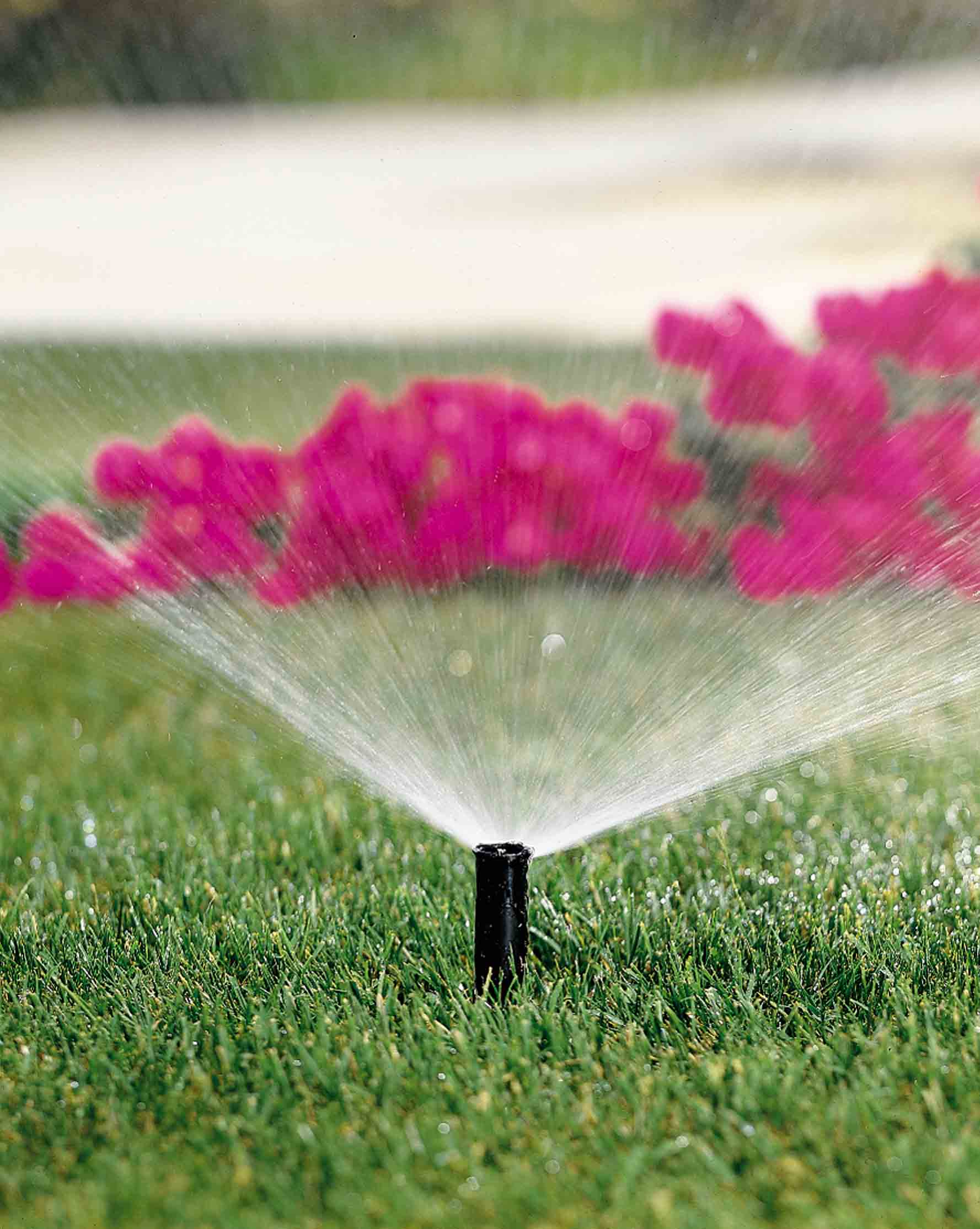 Contact your irrigation contractor to set up an appointment to run through and start up your automatic system, checking for any winter damage. Repair, add or subtract heads as needed based on last year’s history. Consider setting up a spring watering schedule and then adjusting for more frequency or run time later in the summer when things are hotter and days longer. Your system may be automatic but it still needs regular monitoring. The extreme weather variations of the last two years have created real challenges, and irrigation systems need continual tweaks and adjustments to reflect what is happening with heat and precipitation.
Contact your irrigation contractor to set up an appointment to run through and start up your automatic system, checking for any winter damage. Repair, add or subtract heads as needed based on last year’s history. Consider setting up a spring watering schedule and then adjusting for more frequency or run time later in the summer when things are hotter and days longer. Your system may be automatic but it still needs regular monitoring. The extreme weather variations of the last two years have created real challenges, and irrigation systems need continual tweaks and adjustments to reflect what is happening with heat and precipitation. Once clean up and pruning is completed, it’s time to add a layer of mulch if necessary. If your mulch is still visibly intact this chore can wait. Mulch maintains even soil temperatures and minimizes water evaporation – very important in summer months. I like to add a 2” to 3” layer of hardwood mulch into tree and shrub plantings, and only a light dusting around perennials. Another option in perennials areas is to mulch with compost from your own garden, or composted topsoil or manure which can be purchased by the bag. This is a lighter material that adds nutrients to the soil while it decomposes.
Once clean up and pruning is completed, it’s time to add a layer of mulch if necessary. If your mulch is still visibly intact this chore can wait. Mulch maintains even soil temperatures and minimizes water evaporation – very important in summer months. I like to add a 2” to 3” layer of hardwood mulch into tree and shrub plantings, and only a light dusting around perennials. Another option in perennials areas is to mulch with compost from your own garden, or composted topsoil or manure which can be purchased by the bag. This is a lighter material that adds nutrients to the soil while it decomposes. Have you ever gone to plant bulbs in the fall but can’t remember where you current bulbs are? You start digging and oops, you’re unearthing and slicing into existing bulbs? Spring is the moment to mark the spot where you already have tulips, hyacinth, daffodils or any of the other options for early spring color. Alternatively, mark out where there are no current bulbs so you know where to safely dig when the time comes. This simple chore will save you lots of heartache and make for a better result with the new bulb additions.
Have you ever gone to plant bulbs in the fall but can’t remember where you current bulbs are? You start digging and oops, you’re unearthing and slicing into existing bulbs? Spring is the moment to mark the spot where you already have tulips, hyacinth, daffodils or any of the other options for early spring color. Alternatively, mark out where there are no current bulbs so you know where to safely dig when the time comes. This simple chore will save you lots of heartache and make for a better result with the new bulb additions. supple and machine washable, these gloves fit like, well, a glove. The thin breathable stretchy cotton fabric absorbs perspiration and allows a full range of hand motion. Available in many fun colors, please stop by our studio on Walnut to try on a pair.
supple and machine washable, these gloves fit like, well, a glove. The thin breathable stretchy cotton fabric absorbs perspiration and allows a full range of hand motion. Available in many fun colors, please stop by our studio on Walnut to try on a pair.
 cycles of birth, death and birth again for twenty plus years in the landscapes I design and steward from nursery plants to maturity, old age and sometimes death. It is a miracle we take for granted that every spring, after the harsh winter months, buds swell again with new life.
cycles of birth, death and birth again for twenty plus years in the landscapes I design and steward from nursery plants to maturity, old age and sometimes death. It is a miracle we take for granted that every spring, after the harsh winter months, buds swell again with new life. We tend to worship the peak moments in our gardens, but every phase has its beauty and place in the cycle of life. Conception, birth, growth, maturity, decline, death – each has an equal moment in time and space.
We tend to worship the peak moments in our gardens, but every phase has its beauty and place in the cycle of life. Conception, birth, growth, maturity, decline, death – each has an equal moment in time and space.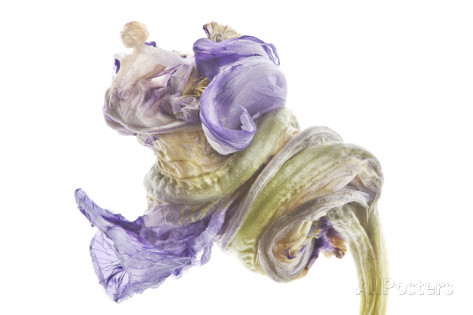 push the pause button to honor the vast continuum of life. And to consider that death isn’t good or bad, it just is. Fortunately for those of us that love landscapes and gardening, we have in our own gardens an amazing visual and sensual illustration of how this all works. All you have to do is step out of doors, breathe and open your eyes.
push the pause button to honor the vast continuum of life. And to consider that death isn’t good or bad, it just is. Fortunately for those of us that love landscapes and gardening, we have in our own gardens an amazing visual and sensual illustration of how this all works. All you have to do is step out of doors, breathe and open your eyes.

 a landscape designer, however, I’m always traveling with a creative eye – judging how everything looks and searching for elements that I can borrow and adapt in my work. It becomes a hunt for inspiration and makes the trip more interesting.
a landscape designer, however, I’m always traveling with a creative eye – judging how everything looks and searching for elements that I can borrow and adapt in my work. It becomes a hunt for inspiration and makes the trip more interesting. Due to an explosion of interest and availability for tropical annuals over the last several years, many commonly used selections are now readily available :
Due to an explosion of interest and availability for tropical annuals over the last several years, many commonly used selections are now readily available :  expect in our zone 6, but nonetheless we can enjoy them for the short show we get between May and October. I love the way Mexicans are not afraid to mix strong colors- in fact, the more the better.
expect in our zone 6, but nonetheless we can enjoy them for the short show we get between May and October. I love the way Mexicans are not afraid to mix strong colors- in fact, the more the better. Aside from lush tropical vines and flowering beauties, Mexico offers great inspiration for hardscape areas. Exciting textural combinations, mosaic accents and dramatic stucco colors look so appropriate in this sunny environment. I look forward to adapting some of these ideas into my suburban projects. *photo Carlos Martin
Aside from lush tropical vines and flowering beauties, Mexico offers great inspiration for hardscape areas. Exciting textural combinations, mosaic accents and dramatic stucco colors look so appropriate in this sunny environment. I look forward to adapting some of these ideas into my suburban projects. *photo Carlos Martin

 It’s fun to drive around during December and see what people have done to decorate the exteriors of their homes. Wreaths, garlands, bows, seasonal greens in showy containers – the displays can be beautiful, especially at night when colored strands of light illuminate tall evergreens or roof lines.
It’s fun to drive around during December and see what people have done to decorate the exteriors of their homes. Wreaths, garlands, bows, seasonal greens in showy containers – the displays can be beautiful, especially at night when colored strands of light illuminate tall evergreens or roof lines. tree” to ancient winter celebrations. But other elements have crept into the conversation: ‘tacky’ Christmas decorations, disco light shows and grossly oversized plastic blowups that are completely unrelated to the holiday. Can someone explain what carousels, penguins or giant dinosaurs with rotating heads have to do with Christmas? And why someone would buy these, let alone want to set them up on their front lawns?
tree” to ancient winter celebrations. But other elements have crept into the conversation: ‘tacky’ Christmas decorations, disco light shows and grossly oversized plastic blowups that are completely unrelated to the holiday. Can someone explain what carousels, penguins or giant dinosaurs with rotating heads have to do with Christmas? And why someone would buy these, let alone want to set them up on their front lawns? They remind me of the ‘ugly’ Christmas sweater that suddenly is the fodder of news reports, holiday parties and social media. Once something people made fun of, ‘ugly’ Christmas sweaters are now seasonal sellers, which sadly means they’re here to stay.
They remind me of the ‘ugly’ Christmas sweater that suddenly is the fodder of news reports, holiday parties and social media. Once something people made fun of, ‘ugly’ Christmas sweaters are now seasonal sellers, which sadly means they’re here to stay. of The Grinch of holiday décor. But my heart really isn’t two sizes too small. I love the holidays and understand the need to not take styling, or anything we design, too seriously. Humor and entertainment should always be included, and kids should get their say with bolder colors, outsized figures and just plain more of everything.
of The Grinch of holiday décor. But my heart really isn’t two sizes too small. I love the holidays and understand the need to not take styling, or anything we design, too seriously. Humor and entertainment should always be included, and kids should get their say with bolder colors, outsized figures and just plain more of everything. But……. I would like to drawn a line out there in the snow (well maybe not this year since we don’t have any!). I’d love to know what drives the truly gaudy, over the top, hyperactive displays that feel they have to ‘scream’ Christmas.….and I’d love to know why we can’t stop looking at them.
But……. I would like to drawn a line out there in the snow (well maybe not this year since we don’t have any!). I’d love to know what drives the truly gaudy, over the top, hyperactive displays that feel they have to ‘scream’ Christmas.….and I’d love to know why we can’t stop looking at them.
 Now is the time to cut back perennials and do leaf and debris cleanup. Apart from obvious aesthetic benefits, keeping the garden free of debris over the winter aids in limiting fungal diseases and molds from developing. Bag and remove leaves, or better yet, recycle them into your compost bin. Decomposed leaves are a key ingredient in humus rich compost and you will be happy next spring to use it as a soil amendment or topdressing for garden beds. Although we cut back most perennials close to the ground, some exceptions such as ornamental grasses, can look lovely through the winter as an architectural accent. This is not a right or wrong here however- it’s more of a personal preference.
Now is the time to cut back perennials and do leaf and debris cleanup. Apart from obvious aesthetic benefits, keeping the garden free of debris over the winter aids in limiting fungal diseases and molds from developing. Bag and remove leaves, or better yet, recycle them into your compost bin. Decomposed leaves are a key ingredient in humus rich compost and you will be happy next spring to use it as a soil amendment or topdressing for garden beds. Although we cut back most perennials close to the ground, some exceptions such as ornamental grasses, can look lovely through the winter as an architectural accent. This is not a right or wrong here however- it’s more of a personal preference.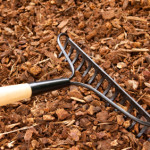 If leaf clean-up is completed, it’s not too late to put down a layer of mulch. Mulch of any type provides a layer of insulation to the soil, regulates temperatures and preserves moisture which is a benefit all year round. In the winter, hydration is critical to plant performance and survival. Cold temperatures and winter winds are highly dehydrating (think of how your skin feels) so maintaining adequate moisture greatly affects winter survival of plants.
If leaf clean-up is completed, it’s not too late to put down a layer of mulch. Mulch of any type provides a layer of insulation to the soil, regulates temperatures and preserves moisture which is a benefit all year round. In the winter, hydration is critical to plant performance and survival. Cold temperatures and winter winds are highly dehydrating (think of how your skin feels) so maintaining adequate moisture greatly affects winter survival of plants.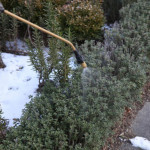 Broad leaved evergreens, with their exposed fleshly leaves, are the most susceptible to winter dehydration and damage. For this, we recommend spray applications of anti-desiccants (or anti-transpirants) such as ‘Wilt-Pruf’ – a non-toxic waxy coating that is sprayed to both sides of the leaf surface to give it a layer of protection. It’s not a foolproof solution, but it can make a difference in the amount of damage incurred, and a less stressed plant can often go on to recover more quickly come spring. Note, that anti-desiccants should be applied when temperatures are above 40 degrees Fahrenheit.
Broad leaved evergreens, with their exposed fleshly leaves, are the most susceptible to winter dehydration and damage. For this, we recommend spray applications of anti-desiccants (or anti-transpirants) such as ‘Wilt-Pruf’ – a non-toxic waxy coating that is sprayed to both sides of the leaf surface to give it a layer of protection. It’s not a foolproof solution, but it can make a difference in the amount of damage incurred, and a less stressed plant can often go on to recover more quickly come spring. Note, that anti-desiccants should be applied when temperatures are above 40 degrees Fahrenheit. Due to last winter’s extensive evergreen damage, burlap wrapping may be something to consider this year. In the past wrapping has been used to protect non-hardy plants, such as fig trees, from surviving winter outdoors. For those who have recently invested in new evergreens, or for a specimen that is precious, this extra step could be worth considering. Although not attractive, burlap will add yet another layer of protection and the payoff come spring is a completely undamaged versus the headache and expense of either waiting for recovery or replacement.
Due to last winter’s extensive evergreen damage, burlap wrapping may be something to consider this year. In the past wrapping has been used to protect non-hardy plants, such as fig trees, from surviving winter outdoors. For those who have recently invested in new evergreens, or for a specimen that is precious, this extra step could be worth considering. Although not attractive, burlap will add yet another layer of protection and the payoff come spring is a completely undamaged versus the headache and expense of either waiting for recovery or replacement. Don’t forget to turn off all outside water lines and have your contractor professionally ‘blow out’ all lines for in- ground irrigation systems. This prevents water in outdoor pipes from freezing, expanding and exploding the pipes over the winter. There is never a good time for water damage, but winter water issues are all the more challenging when you add in the complications of freezing.
Don’t forget to turn off all outside water lines and have your contractor professionally ‘blow out’ all lines for in- ground irrigation systems. This prevents water in outdoor pipes from freezing, expanding and exploding the pipes over the winter. There is never a good time for water damage, but winter water issues are all the more challenging when you add in the complications of freezing.